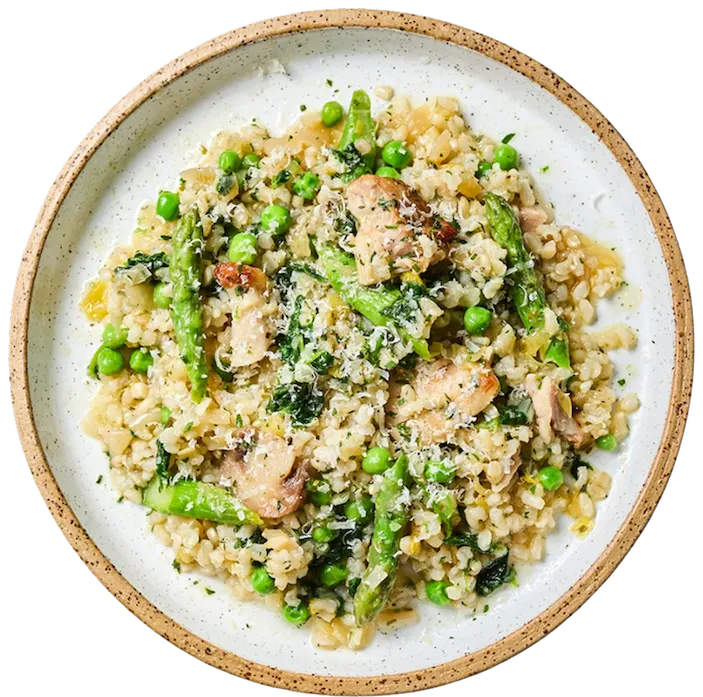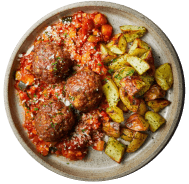How to Eat to Take Care of Your Heart
What Is The Best Diet For Heart Health?
And should you be eating to protect against heart disease? Our guide on eating for heart health covers basics such as what is heart disease, what increases your chance of heart disease, and what foods you should eat to prevent heart disease.
Every 5 minutes, someone dies from heart disease in the UK. It’s a frightening statistic, but expert heart health organisations estimate that as much as 80% of heart disease can be prevented through lifestyle changes like eating a healthy diet, exercising regularly and avoiding smoking.
What Is Heart Disease?
Heart disease is umbrella term that’s used to describe all diseases that affect the heart or blood vessels. Approximately 26% of deaths in the UK are due to heart disease.
Coronary heart disease (CHD) is the most common type of heart disease, and the leading cause of death worldwide. It happens when coronary vessels (which supply blood to the heart) become narrowed because of a build-up of plaque (made up of fatty deposits) on their inner walls. Narrowed vessels can block blood flow to your heart and the rest of your body.
Risk Factors
There are many factors that can increase a person’s chance of developing heart disease. These are known as risk factors. Some risk factors can’t be changed, such as your family history and age. Other risk factors - like smoking, bodyweight and activity levels - can be changed. These are known as modifiable risk factors.
An unhealthy diet (characterised by high levels of saturated fat and added sugars and low in fibre, fruit and vegetables) is a major modifiable risk factor for heart disease. In fact, unhealthy diets are thought to be responsible for around two thirds of coronary heart disease in the UK.
How Exactly Does Diet Impact Heart Health?
Diet affects heart health because it impacts key risk factors like cholesterol levels, blood pressure, and bodyweight.
Let's take cholesterol as an example. Diets that are high in saturated fat (found in foods like meat, dairy, cakes and biscuits) can increase levels of LDL (low-density lipoprotein) cholesterol. This is the type of cholesterol that contributes to plaque build-up.
On the other hand, eating a diet with lots of fibre-rich foods has been linked with a lower risk of heart disease. Scientists think this is because fibre plays a role in keeping cholesterol levels and blood pressure in the healthy range.
Eating a healthy diet is one of the most important things you can to do reduce your risk of heart disease. It can also protect your heart if you have existing heart health problems.
What Foods Should I Eat to Protect My Heart?
Your overall dietary pattern is more important than any single food when it comes to keeping your heart healthy, so here’s what to build your diet around:
Fruit and Vegetables
Eating at least five portions of fruit and vegetables a day (400 grams total) has been shown to help lower your risk of developing heart and circulatory diseases. Only about a third of adults in the UK are eating this much.
Fruit and vegetables are a good source of fibre, plus they contain compounds (called polyphenols) which may help to prevent the build-up of plaque in blood vessels. Try to eat a wide variety of fruits and vegetables (as different types contain different nutrients) with lots of different colours.
High Fibre Foods
Fibre is a type of carbohydrate that we don’t digest or absorb. Instead, it passes through to the large intestine where it fuels the beneficial gut bacteria that live there. Fibre is found in plant foods; wholegrains (like wholemeal bread and wholegrain pasta), fruits, vegetables, nuts, seeds and pulses (beans, peas and lentils).
Combining results from multiple studies looking at the impact of fibre on heart disease risk has found that people eating the most fibre (at least 25 grams a day) have a 15-30% lower risk of coronary heart disease compared to those eating the lowest amounts.
In the UK, it’s recommended we aim for 30 grams of fibre a day. To get that amount, try to include wholegrains in two of your three meals, aim for at least five portions of fruit and vegetables daily, and include nuts, seeds and pulses regularly throughout the week.
Foods with Unsaturated Fats
Fats in food can be unsaturated or saturated. Even though foods like butter and oil have a mix of both, we call them either unsaturated or saturated depending on which type of fat they mostly contain. Foods high in saturated fat can lead to an increase in LDL-cholesterol in the blood but replacing them with unsaturated fats can help lower LDL-cholesterol.
Saturated fats are mainly found in animal products like the fat on meat, butter, ghee, lard, and dairy products like cheese. They’re also in foods made with these fats, for example cakes and biscuits made with butter. Unsaturated fats are mostly found in plant foods like seeds, nuts, avocados and plant oils like olive, sunflower and rapeseed.
Oily Fish
Oily fish (like sardines, salmon, mackerel, herring and trout) are high in omega-3 fats, a special group of unsaturated fats that are thought to play a role in heart health by reducing inflammation and blood clotting. Eating fish (at least twice a week) and plant foods rich in omega-3 fatty acids (walnuts, chia, flaxseed) has been linked with a lower risk of coronary heart disease.
Nuts
Nuts are high in unsaturated fat and contain other beneficial nutrients such as fibre, potassium (which helps regulate blood pressure) and vitamin E, which can also play a role in heart health.
Start With These Small Tweaks to Your Diet
Changing your diet can feel overwhelming and it can be hard to know where to begin. Instead of trying to change lots of things at once, start by picking one or two of the changes from the list below. Once these changes become a habit, you can layer on the next ones.
- Add a piece of fruit to your breakfast – remember frozen fruit counts too.
- Add an easy to eat vegetable to your lunchbox – ideas include a chunk of cucumber, a handful of cherry tomatoes, sugar snap peas or sliced pepper.
- Swap butter for olive oil. Try drizzling it on toast and topping with sliced tomatoes for a delicious breakfast, use olive oil and vinegar to dress vegetables, salads and pulses too.
- Swap from white pasta and bread to wholegrain pasta, wholemeal or seeded bread to up your fibre intake. Try to choose wholemeal wraps, muffins and crackers too.
- Make yourself a nut mix with your favourite nuts and stash in a jar then keep on your work desk or in the fridge so they’re visible. Have a handful a day as a snack.
- Try one recipe a week with oily fish – it's great in curries or try simple fish parcels with pesto and wholemeal breadcrumbs.
- Add a handful of chia, flax or mixed seeds onto yoghurt, porridge or cereal
- Switch half the meat in your recipe for canned lentils. This works great in dishes like lasagne, Bolognese, and shepherd's pie. Or try a totally pulse-based meal once a week – black bean chilli, lentil dahl or a chickpea tagine.
References
- Aune D, Giovannucci E, Boffetta P, et al (2017) Fruit and vegetable intake and the risk of cardiovascular disease, total cancer and all-cause mortality-a systematic review and dose-response meta-analysis of prospective studies. Int J Epidemiol. 2017 Jun 1;46(3):1029-1056 https://www.ncbi.nlm.nih.gov/pmc/articles/PMC5837313/pdf/dyw319.pdf
- Reynolds R et al.(2019) Carbohydrate quality and human health: a series of systematic reviews and meta-analyses. Lancet;393(10170):434-45
related content
more content: Heart Health
browse our ranges.
choose from one of our ranges or personalise your own menu from 60+ meals.
- low FODMAP

- eat well, live well programme

- gluten free

- high protein

- weight management

- ibs

- lowest calorie

- lower carbs

- mediterranean

- smaller range

- pcos

- lean + lighter

- menopause

- heart healthy

- plans

- full menu

- gift cards
- take the quiz